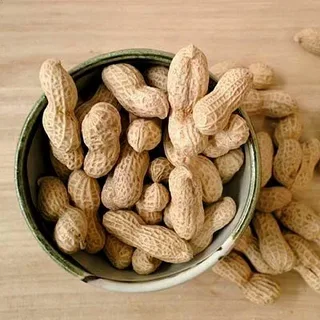Peanut Hay
Peanut hay, a versatile and nutritious forage, has gained recognition in livestock nutrition. Derived from the peanut plant (Arachis hypogaea), it offers a well-balanced mix of fiber, protein, and energy, making it a valuable feed resource. Typically composed of leaves, vines, and stems, it’s harvested after peanut pod collection, minimizing waste in agricultural practices.
Nutritionally, peanut hay excels with a protein content ranging from 14% to 20% and a moderate energy level (TDN of 55%-60%). Its high fiber content benefits ruminant animals like cattle and sheep by promoting proper rumen function. Additionally, it provides essential minerals, such as calcium and phosphorus, along with vitamins like A and E, supporting animal health and well-being.
Its versatility shines in various livestock systems. It serves as a roughage source for beef cattle, aiding rumen function, and enhancing digestion efficiency. In dairy farming, it boosts energy and protein intake, increasing milk production and quality. Small ruminants efficiently utilize its high fiber content, and swine producers find value in its dual-purpose utilization as bedding and nutrition. Peanut hay’s adaptability extends to horses and poultry, but careful introduction is necessary to meet species-specific nutritional needs.
- Description
- Reviews (0)
Description
| Specification | ||
| Moisture: | : | 9% to 10% max |
| Broken Kernels | : | 1% max |
| Protein: | : | 7% to 13% |
| Damaged | : | 0.7% max |
| Fat: | : | 0.5% to 1.5% max |
| Foreign Matter | : | 1% max |
| Fibre:
|
: | 26% to 36% max |
| Aflatoxin | : | 20.00 Ppb Max |
| Packing | : | 30 Kg Jute Bags |



Reviews
There are no reviews yet.